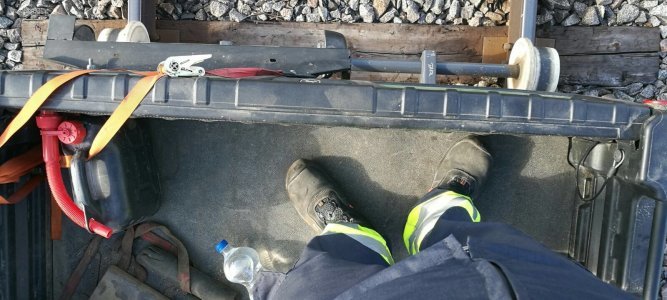Efficient recycling of railway track materials may bring savings of up to a million euros in railway projects

Recycling is economical - brining savings of up to a million euros in railway renovation projects
The Finnish Transport Infrastructure Agency manages and owns railway infrastructure, and the recycling of used materials reduces the costs of new railway projects. This has already been demonstrated in the project to renovate the safety equipment of the Tampere–Seinäjoki line. Recycling activities are continuously increasing, but at the moment they are limited by factors such as lacking depot and storage space.
Projects undertaken by the Finnish Transport Infrastructure Agency are differently-sized pieces of the jigsaw that is the development of the national railway network. Individual projects are headed by project managers whose projects have been issued a funding decision. Because of the separate funding decisions, project managers might have poor visibility onto the next project, which can make parallel planning difficult in practical terms. The project to renovate the safety equipment along the Riihimäki–Tampere line (RITA) included the option for the renovation of the safety equipment on the Tampere–Seinäjoki line (TASE project). Welado’s specialists assess which materials are suitable for recycling and make recommendations on their use.
“In previous projects, we have already used materials such as replaced balises for spare parts as their cost effect is significant. After risk assessment and brainstorming by Welado, recycling efforts have expanded to include the reuse of cabinets and signal masts. It is great that our partner is actively thinking about the reuse of materials,” says Miikka Uotila from the Finnish Transport Infrastructure Agency
Integrating recycling into project planning
When evaluating recyclable materials, the entire lifespan of the new safety equipment system should be considered. The chosen recyclable materials included safety device cabinets situated along railway tracks, signal masts and their light visors, as well as train control balises and BIS cards, for example. We also collected items such as track signals, signal structures and bulb sockets from light units for use in maintenance.
“We diligently went through the obsolete materials and their usability in future projects. For some of the materials, reuse in maintenance was not feasible and purchasing a new item was more cost-effective in some instances. The TASE project has demonstrated the recycling is also economically viable. In the future, the challenge will surely be storing the recyclable material and integrating recycling into project planning,” says Lauri Bois, a project manager at Welado.
Read more about our reference case: The Riihimäki–Tampere safety equipment project (RITA project) was completed ahead of schedule as a result of seamless cooperation
Learn more about our services relating to circular economy and the environment: Kestävä kehitys ja ympäristöarvot – vastuullinen toiminta on tärkeää [Sustainable development and environmental values – responsible operations are crucial]
For further information, contact Lauri Bois.
